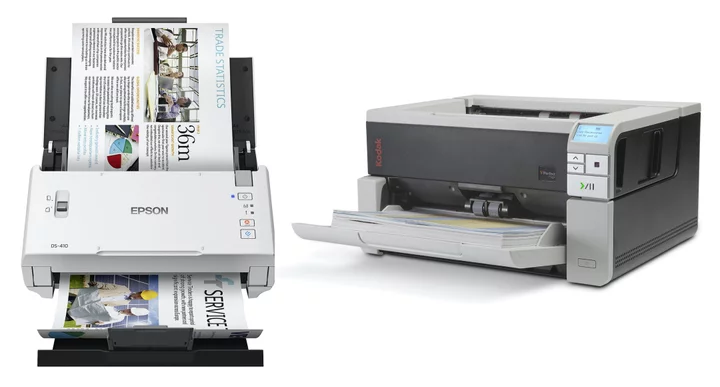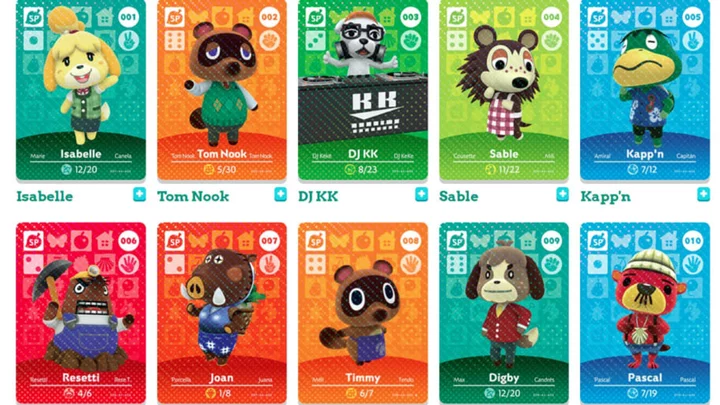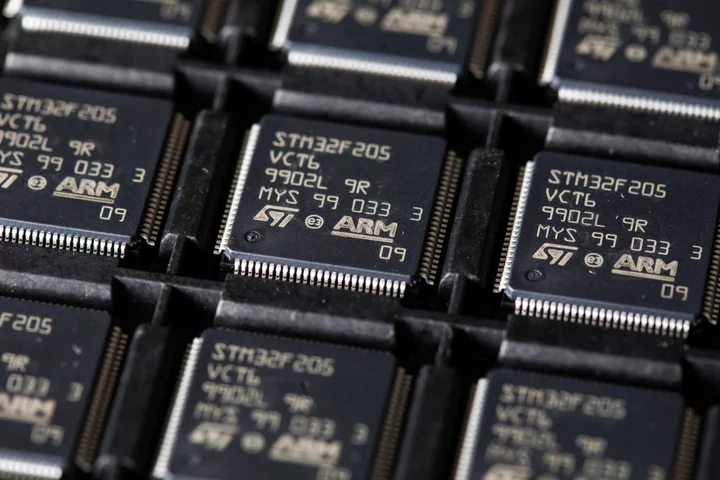Need to scan one- and/or two-sided multipage documents in a hurry? Sheetfed scanners are designed to do just that.
I've covered the document scanner industry for well over 20 years, and each year I find myself more impressed with the sheer number of machines. You'll find everything from tiny single-sheet portables capable of processing just a few pages per minute (ppm) to high-volume workhorses that can handle hundreds of pages per minute. Today's sheetfed document scanners are true workhorses; if you've only used the relatively slow scanner of an all-in-one printer, you'll be amazed at how a dedicated scanner can make short work of the stacks of documents cluttering up your work area.
Every multi-sheet scanner—except combination sheetfed/flatbed machines—has a relatively compact build and an automatic document feeder (ADF) for sending page after page to the scanning sensors. Unlike a flatbed scanner, a sheetfed model processes only individual pages and can't be used to scan objects such as books or magazines. Most sheetfed scanners have two sensors for simultaneously reading both sides of a page. These top-notch, high-speed document scanners, the best we've tested, are optimized for processing plenty of text quickly and efficiently.
This roundup focuses primarily on desktop document scanners, but to keep it comprehensive, we've also included PCMag’s favorite sheetfed portable document scanner and our top pick for a flatbed scanner with an ADF attachment (or a from-the-ground-up combination sheetfed/flatbed). Our goal is to help you choose the best possible scanner for your needs, and there are plenty of factors to consider. Let's start by going over the pros and cons of each of our top picks, followed by a detailed guide that explains how to choose the best sheetfed scanner for your needs.
Document scanners are classified and priced according to capacity, volume, and speed ratings, followed by connectivity and functionality (including the ability to scan to smartphones and tablets) and their software bundle. Size, weight, and specialized features may also be factored in, but the main things that push up the price of a document scanner are (1) how much work the scanner can do and (2) how quickly it can do it.
To keep from spending an arm and a leg on functionality you don't need, start by figuring out how many pages you need to scan each day. A sheetfed portable scanner might be rated for a daily duty cycle of 500 pages or so. On the high end, some scanners meant for professional use have daily duty cycles of 10,000 pages or more.
Another question is how many pages you'll have to scan at a time. If you're dealing with lengthy documents, you don't want to have to break them up. A relatively inexpensive desktop model might come with a 50-sheet ADF; a heavy-duty one could hold as many as 250 sheets for serious batch scanning.
The faster or higher the volume and capacity the scanner, the larger the ADF.One speed factor is whether the scanner has one or two sensors for scanning double-sided documents. Another is the size of the page that you want to scan. All sheetfed document scanners can accept letter- and legal-size pages, but if you're working with larger sheets, make sure the scanner is big enough to handle them. A few high-end models can feed through sheets up to 20 feet long! On the small side, some scanners have special features for receipts and business cards, with software to help manage expense reports and contact databases.
No one wants to stand around waiting for a scan job to finish, and in the real world, that doesn't just mean the physical process of scanning. When we test scanners, our speed ratings also factor in the time it takes for the scanner's bundled software to process the scan and save it to either image or searchable PDF. (We'll look more closely at bundled software below.) In general, the more you scan, the faster your scanner should be.
How Will You Operate the Scanner?
The most basic scanner interface is a Scan or Start button, which is fine if all you want to do is basic scanning directly to your PC. Touch-screen panels with limited or extensive menus give you more walk-up options. Sometimes scanning software lets you set up predefined profiles for file type, resolution, and destination that you can then select and run from the scanner's control panel.
In a few cases, the scanner's own operating system handles profile management and other features. One of the better implementations of this shared functionality is on Fujitsu's consumer and small-office ScanSnap machines. Whether you're using ScanSnap software on your computer or operating the touch screen, functions are almost identical, saving you from having to learn two different ways to do the same thing.
Some scanner software, such as Fujitsu’s ScanSnap, runs not only on your computer or mobile device but also directly on the scanner’s touch-screen display.If you already have a document management system in place, you may not even need most of the software included with your new scanner. However, scanning software packages can do a lot. Various apps and plug-ins enhance and manipulate photos, convert scanned pages to editable text with optical character recognition (OCR), organize and archive business cards, and even extract financial data from receipts and invoices and send it to your tax prep software. Scanning apps for mobile devices are increasingly feature-rich as well.
Nowadays, most scanners come with at least one app for operating them remotely, or from your Android or iOS tablet or smartphone.Software varies widely from manufacturer to manufacturer and from product to product. This is one of the places where our reviews and roundups come in handy: We zero in on the specific features that make document scanners suited for particular tasks and needs.
Which Devices Will Connect to the Scanner?
Each scanner comes with a different mix of wired and wireless connectivity options. These control which computers and mobile devices the scanner can work with. They also affect how quickly the scanner can send a scan to your device, as data transfer over Wi-Fi will likely be slower than over an Ethernet or USB 3.0 connection.
USB will suffice for connecting a single computer. Bluetooth, Wi-Fi Direct, and near-field communication (NFC) will let a scanner talk to a single smartphone or tablet. If you're looking for a scanner that multiple people can use, make sure it has Ethernet or Wi-Fi to connect to an office network or Bluetooth LE for handling multiple mobile devices. Some models don't have Ethernet pre-installed but can be expanded with an optional network interface unit.
Your computer's or phone's operating system matters a lot less than it used to. Most major scanner manufacturers offer drivers and software for both Windows and macOS, as well as apps for both iOS and Android handheld devices, wherever some sort of wireless–NFC (near field communication), Wi-Fi, Bluetooth, Wi-Fi Direct–are available. Some devices can also scan directly to USB flash drives.
Some scanners let you plug in and scan to a USB flash drive.Which Sheetfed Document Scanner Should You Get?
Before you purchase a scanner, make sure you know what you want it to do: how much you'll scan, how fast the scanning process should be, which devices the scanner will connect with, and what the software should do with your scans once they're processed. Then be prepared to make some trade-offs between features and budget. Multi-sheetfed scanners are often intended for business use and priced accordingly. But with a little research, you should be able to find one that meets your needs and doesn't break the bank.
Want to know more about the many scanning options out there? Check out our roundup of the best scanners we've tested. And if you need to print, copy, and fax too, an all-in-one printer might be your best choice.









